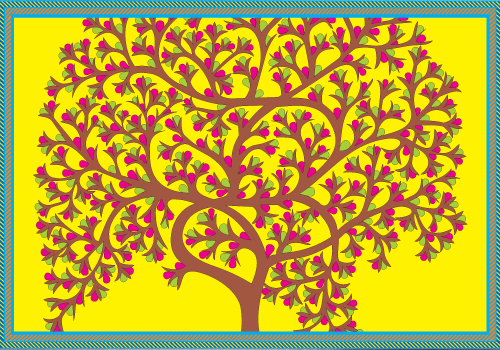The Gond tribal community is one of central India's largest indigenous communities and their art form is all about their everyday quest for life. The word 'Gond' is a derivation of the Dravidian expression 'konda' which means 'green hill'; it consists of parts of Madhya Pradesh, Chhattisgarh, Orissa, Maharashtra and Andhra Pradesh.
The Gonds were the ruling class in many parts of Central India back in the 14th century. Gond kings ruled until they were conquered by Mughal armies and were forced to flee into the thick jungles.
The Gonds believe in decorating their houses and the floors with traditional tattoos and motifs. Both male and female family members participate in painting. The most interesting facet of Gond painting is the use of bright colours like white, blue, yellow and red. These colours are extracted naturally from plant sap, leaves, coloured soil, charcoal and even cow dung.
The yellow is taken from 'chui mitti' which is a type of local sand, brown from 'gheru mitti' which is another type of sand, green from leaves and red from the Hibiscus flower. The common themes in these paintings are vibrant depictions of local flora, fauna and gods like Marahi Devi and Phulvari Devi (Goddess Kali).

Traditionally, these paintings were made on festive occasions such as Diwali, Karwa Chauth, Ashtami and Nag Panchmi and depicted the rituals and man's relationship with nature. It was created by putting dots and lines together. The paintings are, in fact, an offering in the worship of nature, and are also a mode of seeking protection and warding off evil. Everything about the paintings is holy and connected with nature. Each painting has a story to tell and every artist has his own personal style.
These days, Gondi art has evolved and is expressed on paper and canvas by talented artists. It is also created on wooden trays and boxes, which is a hit in countries abroad. It is also very heartening to see the Indian government put efforts to preserve the Gond painting.
The Must Art Gallery is the world's first art gallery dedicated solely to Gond art. The gallery holds exclusive artwork bearing the essence of the tribes and encourages the tribal artists to express themselves in the language best known to them. The future of Gond art looks great just like the art form itself!